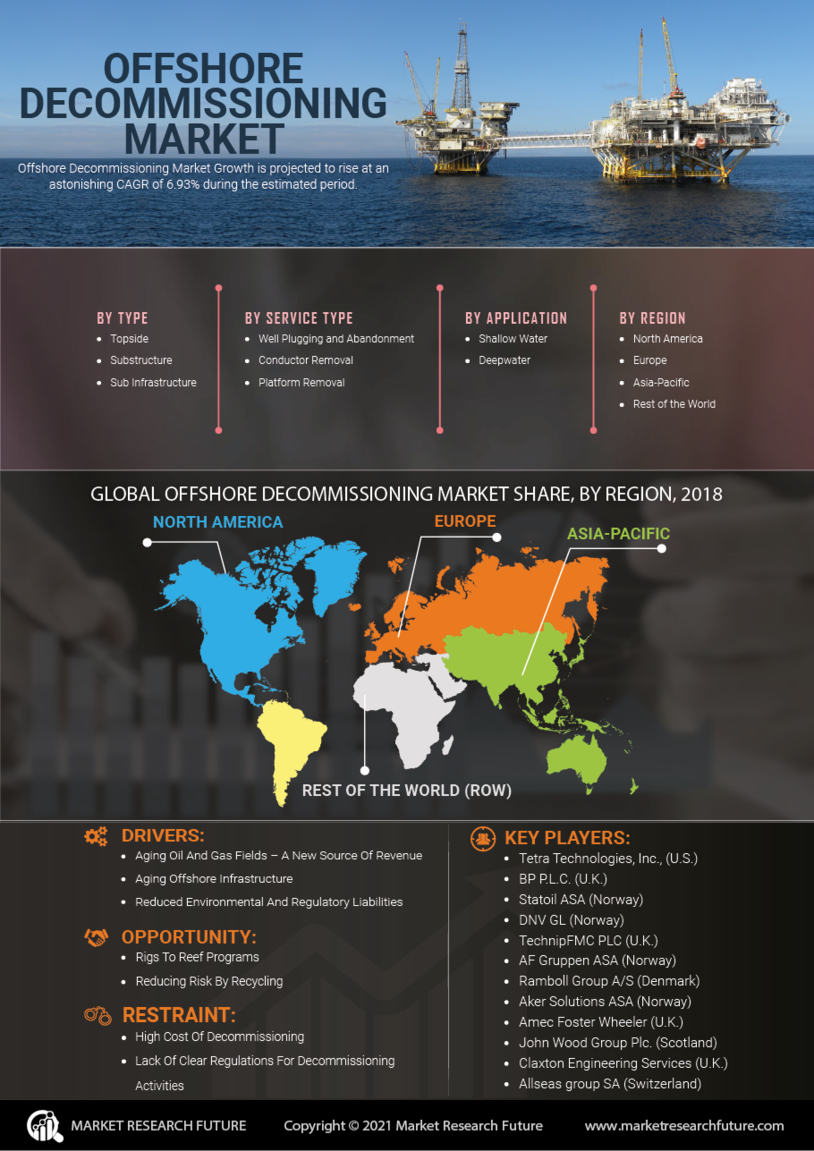Aging Infrastructure
The Offshore Decommissioning Market is significantly impacted by the aging of offshore oil and gas infrastructure. Many installations, originally designed for a lifespan of 20 to 30 years, are now reaching the end of their operational life. This situation creates a pressing need for decommissioning services to safely dismantle and remove these aging structures. According to industry estimates, a substantial number of offshore platforms are expected to be decommissioned in the coming years, particularly in regions with mature oil fields. The decommissioning of these assets not only addresses safety concerns but also aligns with sustainability goals, as it allows for the restoration of marine environments. Consequently, the aging infrastructure trend is likely to drive growth in the Offshore Decommissioning Market, as operators seek to mitigate risks associated with obsolete facilities.
Regulatory Compliance
The Offshore Decommissioning Market is increasingly influenced by stringent regulatory frameworks aimed at environmental protection and safety. Governments are implementing more rigorous decommissioning regulations, which necessitate the safe and responsible dismantling of offshore structures. This trend is evident in regions with extensive offshore activities, where compliance with local and international laws is paramount. For instance, the European Union has established directives that mandate the removal of obsolete offshore installations, thereby driving demand for decommissioning services. As a result, companies operating in the Offshore Decommissioning Market must invest in compliance strategies and technologies to meet these evolving standards, which could potentially lead to increased operational costs but also opens avenues for specialized service providers.
Technological Innovations
Technological advancements are playing a pivotal role in shaping the Offshore Decommissioning Market. Innovations in robotics, remote sensing, and data analytics are enhancing the efficiency and safety of decommissioning operations. For instance, the use of autonomous underwater vehicles (AUVs) allows for precise inspections and assessments of offshore structures, reducing the need for human intervention in hazardous environments. Additionally, advanced modeling software aids in planning and executing decommissioning projects with greater accuracy. These technological innovations not only streamline operations but also contribute to cost reductions, making decommissioning more attractive to operators. As the Offshore Decommissioning Market continues to evolve, the integration of cutting-edge technologies is likely to become a key differentiator among service providers, fostering competition and driving overall market growth.
Economic Viability of Decommissioning
The Offshore Decommissioning Market is increasingly viewed through the lens of economic viability. As oil prices fluctuate, operators are compelled to assess the cost-effectiveness of maintaining aging offshore assets versus decommissioning them. In many cases, the financial burden of continued operation and maintenance outweighs the costs associated with decommissioning. Recent analyses suggest that decommissioning can be a more economically sound decision, particularly when factoring in potential liabilities and environmental risks. This economic rationale is prompting operators to engage in proactive decommissioning strategies, thereby stimulating demand for specialized services within the Offshore Decommissioning Market. Furthermore, the potential for repurposing decommissioned sites for renewable energy projects adds an additional layer of economic incentive, as stakeholders explore innovative solutions to maximize asset value.
Environmental Sustainability Initiatives
The Offshore Decommissioning Market is increasingly aligned with environmental sustainability initiatives. As awareness of ecological impacts grows, stakeholders are prioritizing environmentally responsible decommissioning practices. This shift is evident in the adoption of best practices that minimize environmental disruption during the dismantling of offshore structures. Companies are now focusing on recycling materials and restoring marine habitats, which not only meets regulatory requirements but also enhances their corporate social responsibility profiles. Furthermore, the integration of sustainability into decommissioning strategies is becoming a competitive advantage, as clients seek partners who demonstrate a commitment to environmental stewardship. This trend is likely to drive innovation within the Offshore Decommissioning Market, as firms develop new methodologies and technologies to achieve sustainable outcomes.


















Leave a Comment